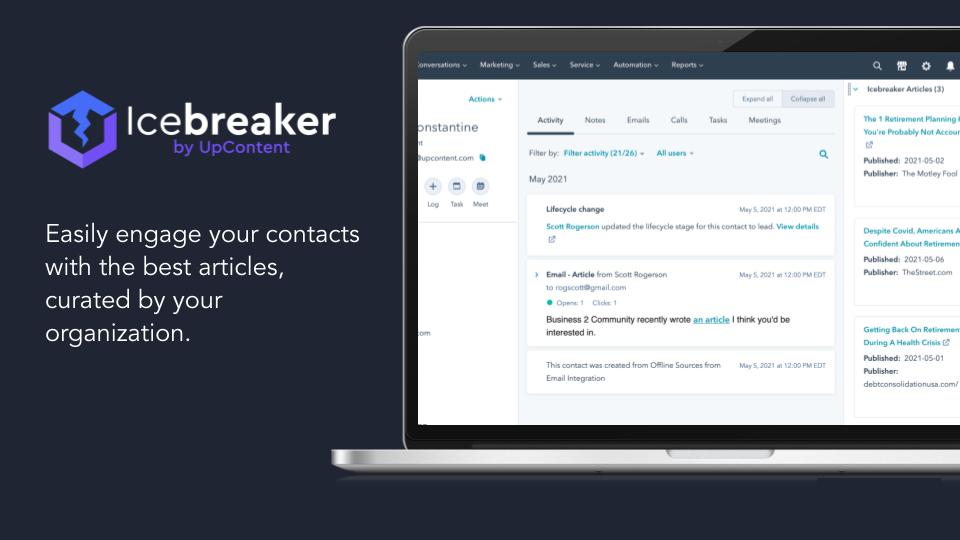Empower Your Workforce with Employee-Driven Advocacy

Now, more than ever, your team wants support in building their own personal brands and positioning themselves as valuable resources to their colleagues and connections.
It's time to get them more involved through an employee-drive advocacy program.
We co-hosted a talk about this subject recently on HootSuite and how you can get your employees engaging more often in ways that create an ongoing cycle of content success.
What is the roadmap? It involves a smart plan and creating improved channels of communication. Let's dive deeper into this based on our recent chat with Hootsuite's engagement manager, Lisa Mahato.
Identify Your Team
As you create your advocacy team, you need to identify the key members whose insights and support are needed to empower your workforce. Your team should be broken down into different categories to handle various functions. Eight typical team categories include:
- The program owner
- Legal/compliance
- IT partners
- Measurement
- Content creation and compliance
- Communications
- Training
- Executive sponsors
While your organization may not have an individual in each of these categories, the responsibilities held by each area should be considered in mapping our your program.
Everyone in these niches needs to work together to help broaden communication and content. Executive sponsors are particularly important because they exert the most influence and can get everyone aligned toward a common goal.
These executives also help encourage interactions among employees and the leadership team. They additionally help identify and empower program champions.
Gathering All the Information You Need
To make an employee advocacy program truly effective, you also need to align all your broader goals and objectives in your company. This is where metrics really come into play, including looking at all your KPIs.
What are goals for your organization and be furthered through an effective advocacy program? Effective advocacy isn't simple a sales or marketing effort.
This need to align every department in your company, including all key stakeholders, requires that you also consider alignment with their goals.
Identifying what your key goals are gets everyone on the same page to avoid confusion.
Identify your most important campaigns, product launches, or other organizational initiatives. What kind of expectations come from leadership about these programs?
Taking this early step helps you to start measuring the growth and success of your program. Increasing brand awareness, checking in on your KPIs, and doing monthly reporting keeps everyone on the same path toward creating better content.
Set Up Proper Social Media Protocols
Getting everyone together to post content in the right channels is a major challenge for employee advocacy programs. One of the biggest hurdles is setting social media protocols to enable your team to post there without overt limitations.
A major problem with social media policies is that companies often encourage interaction there, if also restricting employees from saying certain things.
With some incidents out there of corporate interns posting freewheeling comments on their company's social pages, it's easy to see why stricter rules are put in place.
You shouldn't be too restrictive and allow your team to interact on social media with customers. Doing so helps open the door to better communication and in bringing superior content to your audience.
In cases where you expect your team to mention your brand in social media posts, allow them to come to the leadership team for guidance. Everyone should be on board for using social media in a way that doesn't restrict, albeit done with smart leadership guiding it through.
Breaking Down a Content Strategy
All employee advocacy programs need implementation through multiple stages to ensure proper training and understanding of everyone's role.
Part of this aspect is making sure all employees involved in content creation understand what makes for good content in the eyes of your employees. A quote mentioned in the Hootsuite chat really resonates when thinking about your employees view the content you provide:
"I don't care where the article came from. I just care that it is good."
Focus on your employees seeing success rather than using their channels as a way to simply increase the reach of your brand messaging is critical in advocacy programs when it comes to content implementation.
Talent recruitment and retention should become front and center to make this happen. Keeping valuable content flowing to your team for them. to personalize and share will not only translate to a sustainable program but showcase your team's culture and engagement.
Learning and development initiatives are also a strong part of this. Without continual education, understanding how to be effective in an advocacy program becomes more of a muddle in the eye of your team.
Digital awareness is additionally important here to proliferate content. Lead generation and selling work in-tandem as part of a wider marketing effort.
Getting Quality Content Out to Your Audience
Working up toward getting quality content available to your team at an appropriate volume is always a challenge for any company.
Employees ultimately have to want to come back to your advocacy solution not only to share, but also to read what is available that day.
Your goal should be to get at least 20 new pieces of content ready to go into the pipeline each week.
Once you have this level of pipeline, getting it to your employees to use it for marketing should become a more natural progression for your program.
A major mistake many companies make is using advocacy programs merely as a channel to solely get corporate content to your employees.
Your employees already know where to get corporate content, but you also want to mix up the types of content available to them. Three of the most common that can help define your brand are:
- Corporate content (26%)
- Industry content (41%)
- Lifestyle content (33%)
Creating this mix of material gives your employees a chance to shine in displaying what they are all about while providing more diverse content for your targeted audiences.
Opening up multiple channels for your employees to find all that content helps them get it to the right channels for proliferation.
A service of personal branding, implementing a consistent content experience, creating multi-channel engagement, and measuring what you manage are four key steps to making this work.
Using Content as Part of Your Employee Advocacy Program Success
Content becomes a major driver in getting your employees to take part in your advocacy program. Once they start sharing third-party or original content, engagement is going to start in earnest.
Some challenges still need addressing, though. In many cases, companies starting original content initiatives find success fairly quickly.
However, sometimes it becomes a problem sustaining a continual content flow at a high level. Creatives can sometimes burn out, run out of ideas, or just become overburdened with other work to continue creating continually.
When this happens, the best solution is to go inward in your company and address employee interests.
As mentioned above, finding out what your key goals are and aligning that with interests of your employees sets them up to really believe in the content they create or proliferate.
Matching this up with interests of employees guarantees they'll stay inspired rather than lose interest over time.
Adopting a broader mix of content is usually the answer to the above problem of content creation sustainability.
The more diverse the topics, the greater the chances to create more original pieces and to broaden the company brand.
No matter what your industry is, you can usually find different angles in creating various marketing media.
Using automation tools often helps on this front to keep getting content out there to people without depending on people doing it manually.
Adding more personalization to the content (including social media posts) adds to employees feeling more fulfilled in working with the content they create.
Making all content a vehicle to share and be an asset to employees is far better than forcing them to proliferate content as fast as they can.
Summary
To bring a content aspect to your advocacy program, remember to get all your employees together. A roundtable discussion is vital first, no matter how big or small your company staff.
Remember, employee perspective always matters. Without their input, an advocacy program centered on business goals alone just won't work.
Providing the proper content mix between original and curated content while also empowering your employees to personalize their posts, within your company and regulatory (if applicable) policies, not only removes the burden from your core team in crafting each posts, but also enables authentic interaction by your team with their networks.
Want more?
Ready to dig deeper and see how you can develop an employee advocacy strategy, align key stakeholders, and ensure successful adoption and engagement?
This post was inspired by a joint webinar conducted by Hootsuite's Engagement Manager, Lisa Mahato, and UpContent's Scott Rogerson. You can register for the replay here.
Image Credit:
"City Light employees in office, 1954" by Seattle Municipal Archives is licensed under CC BY 2.0



